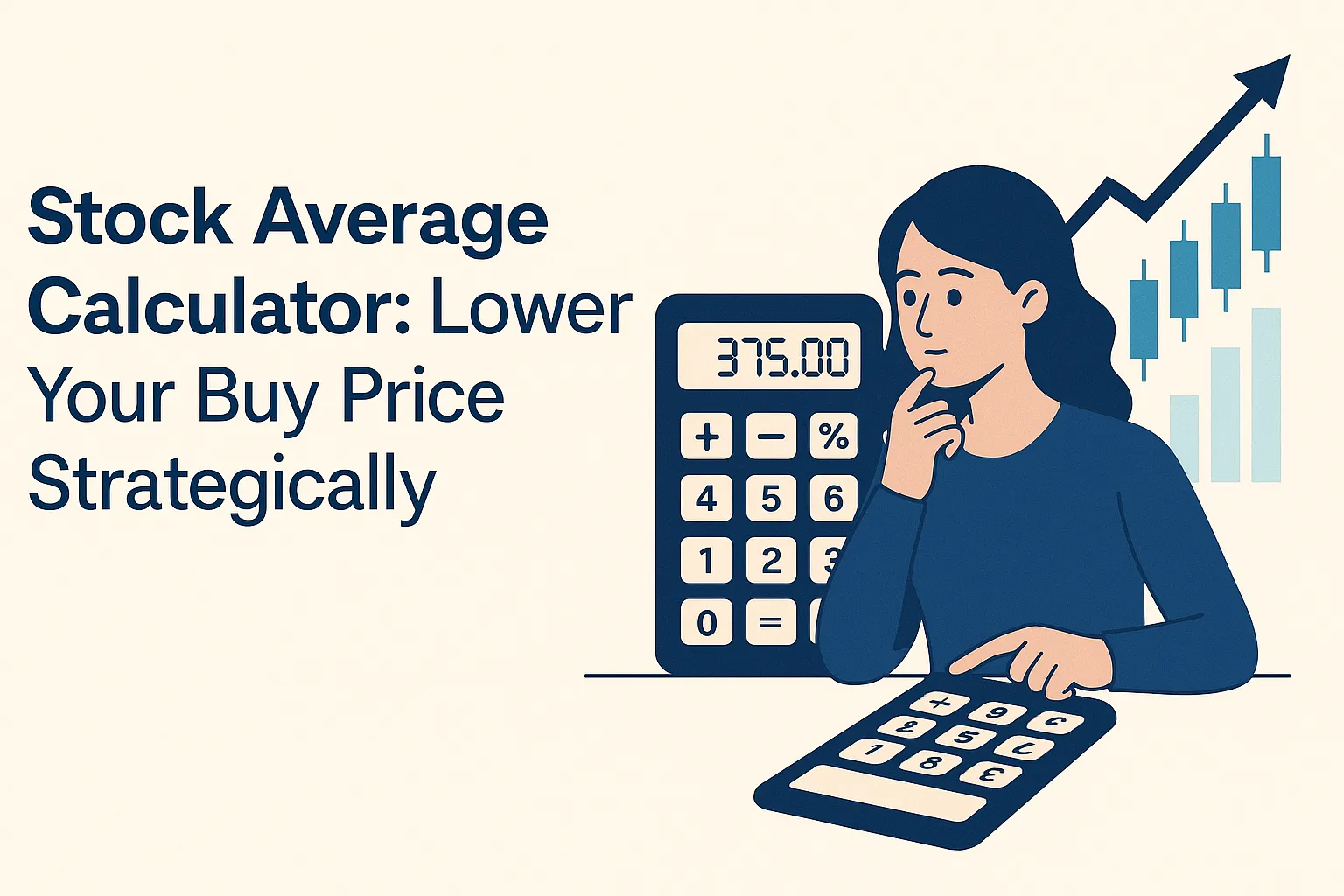Stock Average Calculator: Lower Your Buy Price Strategically
In volatile markets, prices often move against your initial trade. When this happens, many traders choose to average down—buying more at a lower price to reduce their overall buy cost. A stock average calculator helps you do this precisely.
In this guide, we’ll show you how to use a stock average calculator and how it can support your trading strategy.
What Is a Stock Average Calculator?
A stock average calculator helps you determine your new average buy price after purchasing the same stock at multiple price points. It combines:
- Quantity and price of your first purchase
- Quantity and price of your second (or third) purchase
This gives you the average price per share, which is your new breakeven base for future trades.
Why Use a Stock Average Calculator?
Averaging down (or up) affects your:
- Break-even point
- Target price
- Overall risk exposure
A calculator removes guesswork by quickly showing your exact new average, allowing better exit planning.
When to Use It?
Use a stock average calculator when:
- You buy the same stock more than once at different prices
- You want to know your updated breakeven point
- You’re considering averaging down or building a position
Step-by-Step: How to Use a Stock Average Calculator
Step 1: Enter First Purchase
- Price: ₹200
- Quantity: 100 shares
Step 2: Enter Second Purchase
- Price: ₹180
- Quantity: 100 shares
Step 3: Click Calculate
Formula Used:
Average Buy Price = (Price1 × Qty1 + Price2 × Qty2) ÷ (Qty1 + Qty2)
For the example above:
= (₹200×100 + ₹180×100) ÷ (100 + 100)
= (₹20,000 + ₹18,000) ÷ 200 = ₹190
How It Helps Your Trading
- Lower Exit Target: Reduces the price at which you break even
- Better Cost Basis: Makes your position more manageable
- Strategic Averaging: Helps plan how much to invest in next batch
- Avoid Overbuying: Prevents emotional overexposure
Advanced Tip: Include Brokerage and Taxes
To get a more realistic average, include any fees or taxes associated with each purchase, if the calculator allows. This will raise your actual average slightly but offer a more accurate breakeven point.
Common Use Cases
- Averaging down in falling markets
- Rebalancing portfolio cost after corrections
- Buying the dip in strong trending stocks
- Strategic position building over time
Final Thoughts
A stock average calculator is a key tool for active traders. By using it, you can reduce your buy price intelligently and plan profitable exits. Just be cautious—averaging down only works well when you still believe in the stock’s fundamentals or trend.
FAQs
Q1: What’s the risk of averaging down?
If the stock keeps falling, you increase exposure to a losing position. Only average down when confident.
Q2: Can I average up instead?
Yes. The calculator works for both averaging down and up. It still gives you the new average price.
Q3: Should I always include fees in the calculation?
If possible, yes. Fees affect the actual cost and thus your true average.
Q4: Is this tool useful for long-term investors?
Absolutely. It helps long-term investors who build positions over time at different prices.
Q5: Does this replace my broker’s reports?
No. It’s a planning tool to help you track and adjust trades. Always verify with official broker statements.
